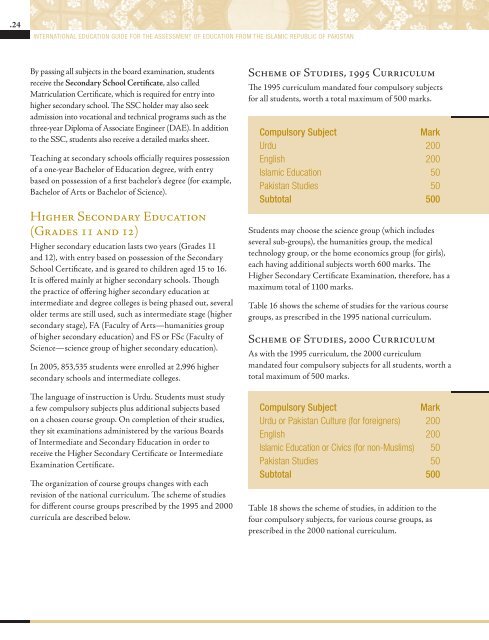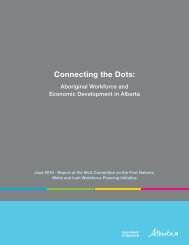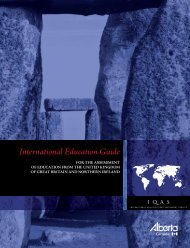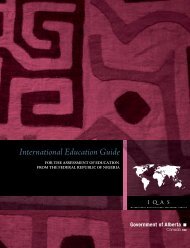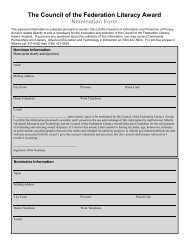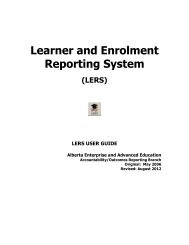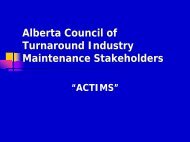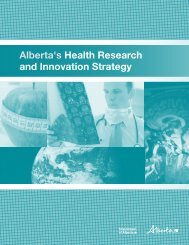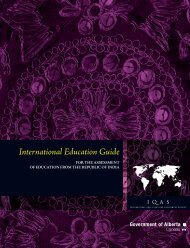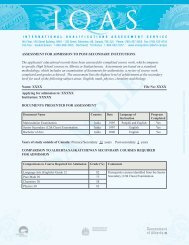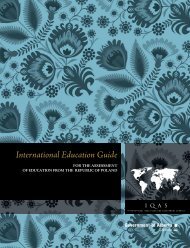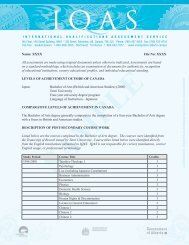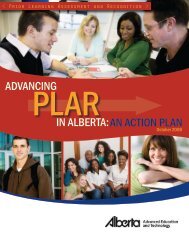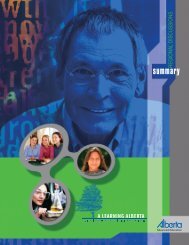International Education Guide - Enterprise and Advanced Education ...
International Education Guide - Enterprise and Advanced Education ...
International Education Guide - Enterprise and Advanced Education ...
You also want an ePaper? Increase the reach of your titles
YUMPU automatically turns print PDFs into web optimized ePapers that Google loves.
.24<br />
INTERNATIONAL EDUCATION GUIDE for the assessment of education from the Islamic Republic of Pakistan<br />
By passing all subjects in the board examination, students<br />
receive the Secondary School Certificate, also called<br />
Matriculation Certificate, which is required for entry into<br />
higher secondary school. The SSC holder may also seek<br />
admission into vocational <strong>and</strong> technical programs such as the<br />
three-year Diploma of Associate Engineer (DAE). In addition<br />
to the SSC, students also receive a detailed marks sheet.<br />
Teaching at secondary schools officially requires possession<br />
of a one-year Bachelor of <strong>Education</strong> degree, with entry<br />
based on possession of a first bachelor’s degree (for example,<br />
Bachelor of Arts or Bachelor of Science).<br />
Higher Secondary <strong>Education</strong><br />
(Grades 11 <strong>and</strong> 12)<br />
Higher secondary education lasts two years (Grades 11<br />
<strong>and</strong> 12), with entry based on possession of the Secondary<br />
School Certificate, <strong>and</strong> is geared to children aged 15 to 16.<br />
It is offered mainly at higher secondary schools. Though<br />
the practice of offering higher secondary education at<br />
intermediate <strong>and</strong> degree colleges is being phased out, several<br />
older terms are still used, such as intermediate stage (higher<br />
secondary stage), FA (Faculty of Arts—humanities group<br />
of higher secondary education) <strong>and</strong> FS or FSc (Faculty of<br />
Science—science group of higher secondary education).<br />
In 2005, 853,535 students were enrolled at 2,996 higher<br />
secondary schools <strong>and</strong> intermediate colleges.<br />
The language of instruction is Urdu. Students must study<br />
a few compulsory subjects plus additional subjects based<br />
on a chosen course group. On completion of their studies,<br />
they sit examinations administered by the various Boards<br />
of Intermediate <strong>and</strong> Secondary <strong>Education</strong> in order to<br />
receive the Higher Secondary Certificate or Intermediate<br />
Examination Certificate.<br />
The organization of course groups changes with each<br />
revision of the national curriculum. The scheme of studies<br />
for different course groups prescribed by the 1995 <strong>and</strong> 2000<br />
curricula are described below.<br />
Scheme of Studies, 1995 Curriculum<br />
The 1995 curriculum m<strong>and</strong>ated four compulsory subjects<br />
for all students, worth a total maximum of 500 marks.<br />
Compulsory Subject<br />
Mark<br />
Urdu 200<br />
English 200<br />
Islamic <strong>Education</strong> 50<br />
Pakistan Studies 50<br />
Subtotal 500<br />
Students may choose the science group (which includes<br />
several sub-groups), the humanities group, the medical<br />
technology group, or the home economics group (for girls),<br />
each having additional subjects worth 600 marks. The<br />
Higher Secondary Certificate Examination, therefore, has a<br />
maximum total of 1100 marks.<br />
Table 16 shows the scheme of studies for the various course<br />
groups, as prescribed in the 1995 national curriculum.<br />
Scheme of Studies, 2000 Curriculum<br />
As with the 1995 curriculum, the 2000 curriculum<br />
m<strong>and</strong>ated four compulsory subjects for all students, worth a<br />
total maximum of 500 marks.<br />
Compulsory Subject<br />
Mark<br />
Urdu or Pakistan Culture (for foreigners) 200<br />
English 200<br />
Islamic <strong>Education</strong> or Civics (for non-Muslims) 50<br />
Pakistan Studies 50<br />
Subtotal 500<br />
Table 18 shows the scheme of studies, in addition to the<br />
four compulsory subjects, for various course groups, as<br />
prescribed in the 2000 national curriculum.


